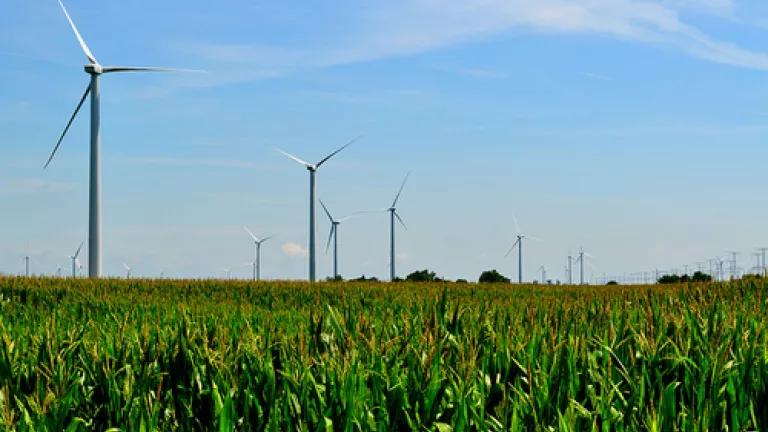CPP Stayed, Take Heart: Wind, Solar Responsible for Almost 75 percent of New Electric Capacity Last Year

Wind power, like that generated at this Illinois wind farm, was the largest source of new electric capacity in the U.S. last year, followed by solar power. That growth comes as the result of smart government policies that promote clean energy. (Photo via Flickr.)
Turns out, not all of last week's clean energy headlines were so gloomy. Far from it, in fact. Not only will the CPP likely be affirmed in the courts on its merits, but, as the authors of the just-released 2016 Sustainable Energy in America Factbook noted, wind power and solar are blowing conventional, polluting power out of the water as sources of new electric generating capacity. That's right: out of the water. Due to their overall wonderfulness--good jobs, cleaner air, lower energy prices--wind and solar power are shifting our electric mix from polluting to less polluting every year, even without the CPP yet in effect. (The CPP's full force won't be felt until 2022, at least.) Last year, in fact--and this is some pretty big news--wind power served as the largest source of new electric capacity nationwide, coming in at more than 8.5 gigawatts. That's enough to power about 2.3 million homes. Solar was second, adding 7.3 gigs worth--electricity for 1.5 million American families. Together, they made up almost three-quarters of all new capacity additions in the United States.
And that's not all. Last year, solar and wind power combined constituted 7.5 percent of the nation's electric generating capacity, up from 0.9 percent only 10 years ago.
This is fast-moving progress, people.
Thanks to smart public policies that have jumpstarted renewable-energy demand, sped economies of scale, and driven investment in technology and competition in the marketplace, clean energy prices--wind and solar prices in particular--are plummeting, making them the new power sources of choice all on their own economic merits.
In an increasing number of places around the country, utilities are choosing wind and solar power as their go-to options, not just because of state renewable energy standards have driven deployment in 29 states nationwide, but for reasons that are sweet music to all of our ears: clean energy costs less than the polluting stuff, even without factoring in the public health and environmental costs. (Those costs, by the way, are huge. This 2011 study from the Harvard School of Public Health puts the annual toll from coal alone at between one-third to more than one-half a trillion dollars.) When Alabama Power made its first wind power purchase, the company reinforced that "the price of energy from the wind facility is expected to be lower than the cost the company would incur to produce that energy from its own resource...with the resulting energy savings flowing directly to the company's customers."
Last year's impressive capacity numbers are just the start. Thanks to bipartisan clean energy incentives included in December's Omnibus Spending legislation, wind and solar power now have the stable, predictable support they need to grow like gangbusters, with 44 gigawatts of wind power expected to come by 2021 and 59 gigs of solar projected to be built through the same year.
Add to that a growing number of increasingly ambitious state renewable energy standards now on the books and things, clean energy-wise, are starting to look pretty promising. (California and New York will both get 50 percent of their electricity from renewable sources by 2030; Hawaii plans a full 100 percent by 2045. And the Clean Power Plan will drive a lot more increases.)
So if last week's Supreme Court stay has you down, take heart. We're not out of the woods on climate yet, to be sure. But clean energy gains, like those reported last week for both wind and solar power, are moving us down the path toward what seems like a definite clearing.

